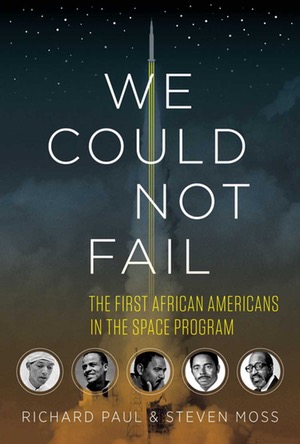Review: We Could Not Failby Jeff Foust
|
| “Not everyone achieved the ends of the civil rights movement by marching, picketing, and saying ‘no,’” Paul and Moss write. |
The book is a mix of individual stories and the broader picture of the interaction of the nascent space agency, particularly its field centers in the South, with the growing civil rights movement. The stories of the pioneers are particularly compelling, as they deal with discrimination and segregation in Florida, Alabama, and Texas. Sometimes that discrimination was subtle—not being invited to social events while working for NASA or its contractors—but other times it was far more difficult, like finding a place to live that would not discriminate against blacks.
One thing that is telling from the book is how those men—all the people profiled in the book are men—dealt with discrimination in the workplace. “Not everyone achieved the ends of the civil rights movement by marching, picketing, and saying ‘no,’” Paul and Moss write.
An example they cite is Julius Montgomery, a technician at Cape Canaveral who signed up for a training program in 1959 at the new Brevard Engineering College, which at the time leased classrooms in a segregated public school. When the school found out Montgomery signed up for a class there, they threatened to evict the college. Rather than a showdown of some kind, like the sit-ins that became a hallmark of the broader civil rights movement, Montgomery agreed to withdraw from the class until the college moved to its own building several months later. Brevard Engineering College is now known as the Florida Institute of Technology, which later named an award in Montgomery’s honor.
Montgomery’s case was not an isolated one. Confrontation was less likely than accommodation or negotiation of some kind as those early African Americans at NASA and elsewhere in the space program faced challenges. Some even claimed to be ignorant of what was going on. George Carruthers, who worked at the Naval Research Lab in Washington, DC, on an instrument that would go to the Moon on an Apollo mission, said he didn’t recall the city’s segregation or even the 1968 riots there. “Of course I may not have been reading the newspaper every day,” he said when asked about the riots that scarred parts of the city for many years. He was, the authors concluded, simply too focused on his work to notice the societal upheavals around him.
While some past accounts have praised NASA for its role in providing new opportunities for African Americans, Paul and Moss argue that NASA did far less than what it received credit for. The fraction of the NASA workforce in the 1960s that were African Americans lagged far behind those of other federal agencies.
There were several reasons for that, they argue. Historically black colleges often struggled to produce graduates with the technical education needed for NASA, while graduates from schools in other parts of the country were reticent about moving to the segregated South. And, while NASA proclaimed to be an equal opportunity employer, with pressure from the White House to hire more black professions, those hiring decisions were often in the hands of local staff with their own biases.
Meanwhile, the aerospace industry in general had a long-running prejudice against African Americans. “There appear to have been few industries more openly contemptuous toward the idea of racial equality at this time than the aerospace industry,” they write, citing bigotry and “outright racist statements” by industry executives dating back to the 1940s. They noted, with irony, that one of the few leading NASA officials who took a genuine interest in encouraging blacks to enter the agency workforce was Wernher von Braun, who two decades earlier was “building weapons for the twentieth century’s most notorious racist, Adolf Hitler.”
| One of the few leading NASA officials who took a genuine interest in encouraging blacks to enter the agency workforce was Wernher von Braun, who two decades earlier was “building weapons for the twentieth century’s most notorious racist, Adolf Hitler.” |
As fascinating a story as the authors tell here, the book still has some rough edges. The authors don’t tell the stories of the men they feature in strict chronological order, sometimes jumping back and forth between their lives and the bigger political and societal issues. That can make it difficult to follow their paths into and through the space program, or what happened to them later in their careers. The authors also sometimes repeat anecdotes and passages, giving the reader a sense of déjà vu.
Nonetheless, though, We Could Not Fail tells a rich story about this era of NASA’s history, one that defies conventional wisdom. Historians have not previously told this story in detail, they conclude at the end of the book, because they perceived NASA and the civil rights movement “as being completely separate.” They disagree with that: NASA did play a role in promoting civil rights, but the problem was that its influence in promoting racial equality was limited even in locations where it had facilities. The exception was Huntsville, where NASa’s role in the local economy was large and the city more amenable to the goals of the movement.
With African Americans now in all echelons of NASA’s workforce, including current administrator Charles Bolden, the struggles recounted in the book seem more distant than a half-century ago. However, James Jennings, an African American who worked for 35 years at NASA, including chairing its Council on Equal Employment Opportunity, is more skeptical. “We haven’t made much progress,” he says. “The same things that we were talking about in the early ’70s about getting blacks involved in the program or hiring blacks—they were the same problems that we have today.” But the book demonstrates that, compared to 50 or more years ago, NASA, and society, have made significant, if incomplete, progress on civil rights and equal opportunities for all Americans.
